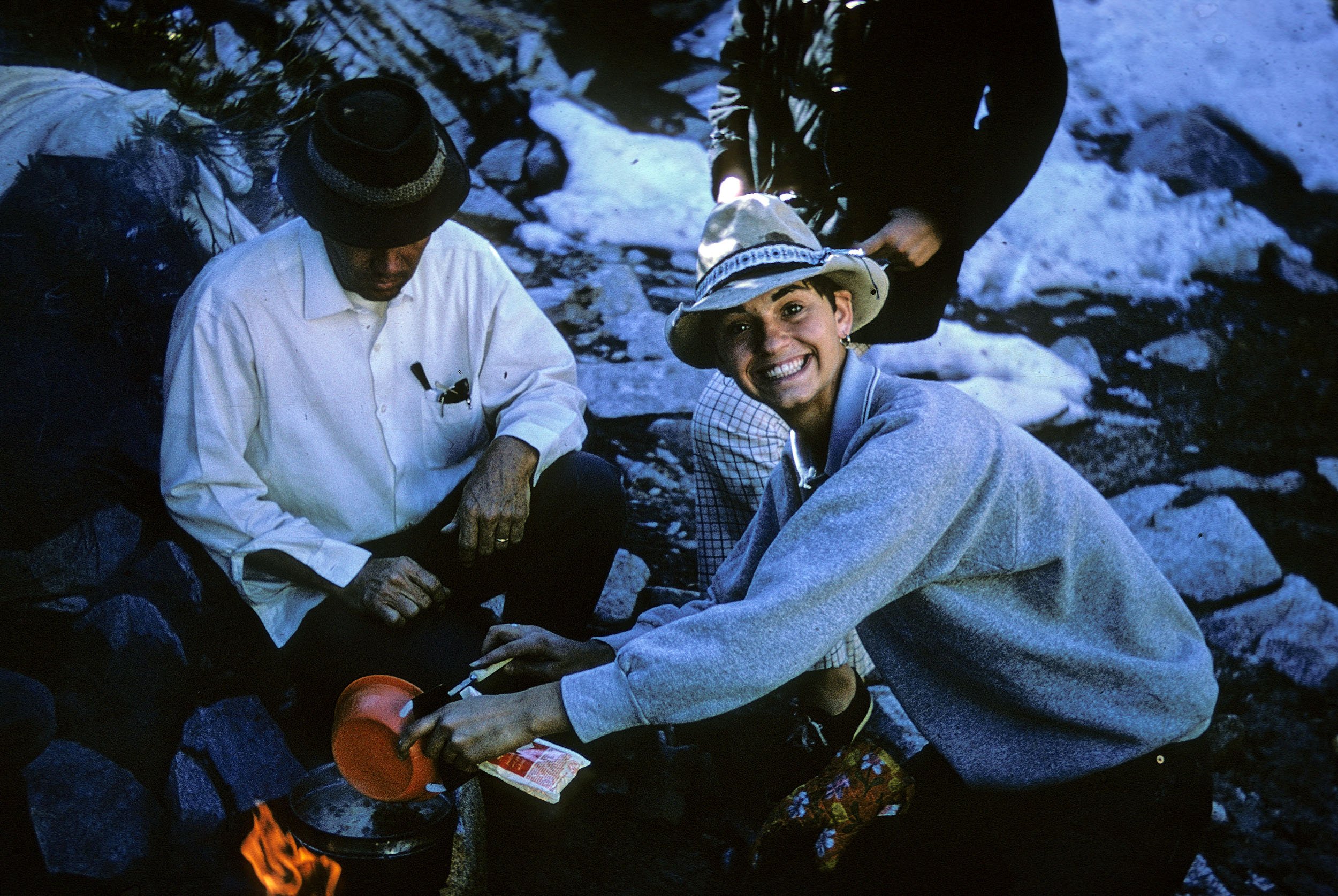Backpacking Cuisine in the 60s and 70s.
In the 60s and 70s our gear was definitely heavier, but we carried less of it. We didn’t usually carry tents, hammocks, bear canisters, water filters, camp chairs, stoves, or fuel, We hiked the entire John Muir Trail cooking on wood fires, and with no freeze dried foods. We were so hungry that we appreciated any food we had. .We learned how to cook better on each trip, but generally we had edible to great food. We had a small metal grill which we put between two rocks, with the pot on it for cooking over a fire. The weather in the Sierras was generally clear and dry, so we didn’t need tents and could cook on wood fires. We used steel Army Ranger cooksets, which were large enough to cook for 4 people, and the four hikers split up the food and kitchen gear.
These great cooksets had two nesting pots, that could be used as a double-boiler, and a fry pan lid big enough for 4 medium fish. . We got pretty good at baking bread and biscuits and I recall using the double-boiler to melt Herseys bars mixed with powdered milk to make frosting for a cake. We sometimes put raisins from our lunches in the breads. The pots were stored in a pillow case because they were dirty with soot from the fire. We didn’t use water filters in those days, and giardia was unheard of. The classic Sierra Cup, hung on a belt, was handy for getting a drink on the trail, but many used a plastic cup of some kind. One quart plastic bottles were popular mixing kool aid on the trail. Drinking bladders were not thought of at that time, and totally not needed.
Breakfasts might be fresh eggs, bacon, oatmeal and raisins, pancakes with syrup, and butter, cream of wheat, English muffin with butter and jam, etc. Drinks for breakfasts included Start orange drink mix, cocoa, coffee, tea, honey, We also had the option of instant breakfast, and Toastums (pop tarts). I think Jeane Henry below is making eggs and bacon.
Lunches: were in a plastic bag, one per person for each day. An advantage of this was that you could toss a lunch into a day pack and hike off to explore peaks or lakes. Each trail lunch included a chunk of cheddar cheese, dried beef from a jar, a little box of raisins, a handful of GORP, a Wyler’s sugary powdered drink, and a small Payday bar or Hersheys tropical chocolate bar . These were chosen because they didn’t melt. We also had a small envelope of crackers with peanut butter or cheese filling.
Dinners: Fishing was a big deal for us, as a supplement to our meals. We also took along a big onion, a chunk of unsliced bacon, a green pepper, and cooking oil for fish. We would add a few slices of these items to spice up the meal. Main courses might be stoganoff, mac and cheese, egg noodles and a sauce. Dumplings would be added to meals, as well as bisquits, soup and cocoa, instant breakfast. We used a pot lifter on the pot, and one time a whole pot of spaghetti was spilled on the ground due to the pot lifter not gripping well. We were bummed.
Desserts included jello, popcorn, pudding, and baked breads and cakes.
We got pretty good at baking bread and biscuits and I recall using the double-boiler to melt Herseys bars mixed with powdered milk to make frosting for a cake.
Shown below is a kitchen setup, with fritters cooking in bacon grease, the grill still on the fire, and tea for 4 brewing. . Below that is a breakfast of fresh caught fish, bacon, and the makings for pancakes (Bisquick). Hot water on for coffee. The bottle contains butter to last the whole trip, and if we had pancakes we’d have a bottle of syrup somewhere.
Below is a dessert of baked bread with a layer of sweet stuff. I’m glad I washed my hands before dinner.









